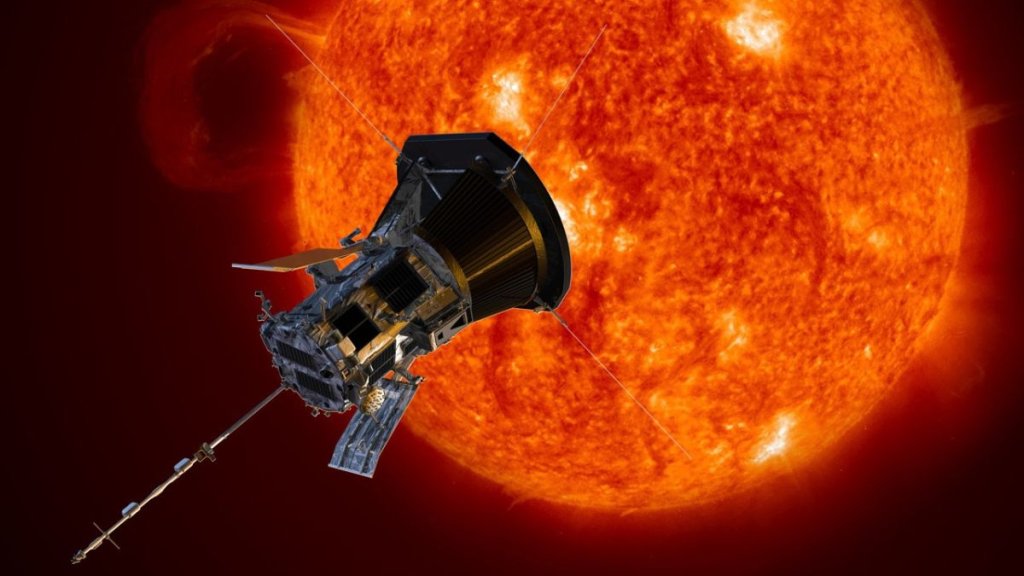
Instrument on NASA’s Parker Solar Probe switches off unexpectedly (Image Credit: Space.com)
One of the instruments on NASA’s Parker Solar Probe powered down unexpectedly last weekend, but don’t panic — the mission team expects it to come back online soon.
The sun-studying spacecraft switched off its Energetic Particle Instrument-Hi (EPI-Hi) on Feb. 12, while a software patch was being uploaded to it, NASA officials explained in a brief Parker Solar Probe update on Friday (Feb. 17).
“An anomaly review board determined the instrument was turned on prematurely before the new patch was completely loaded,” the update states (opens in new tab).
“The instrument will remain off for several weeks as the geometry between the probe, the sun and solar radio frequency interference will prevent a good uplink,” it continues. “The EPI-Hi is expected to return to normal operations after this blackout period, before the spacecraft begins its 15th close encounter with the sun on March 12.”
The Parker Solar Probe remains healthy overall, NASA officials added in the update.
Related: What’s inside the sun? A star tour from the inside out
The Parker Solar Probe launched atop a Delta IV Heavy rocket in August 2018 on a $1.5 billion mission to study the sun like never before.
Mission scientists aim to solve several solar mysteries, chief among them why the sun’s outer atmosphere, or corona, is so much hotter than its surface and how the solar wind — the stream of charged particles flowing constantly from the sun — reaches its incredible velocities.
The Parker Solar Probe gathers most of its data during daring super-close flybys of the sun, which expose the spacecraft to sizzling temperatures and accelerate it to tremendous speeds. (Solar gravity is a powerful thing.)
These flybys occur roughly once every five months. The next one, the 15th of the mission to date, will peak on March 17 (opens in new tab), when the probe zooms just 5.3 million miles (8.5 million kilometers) above the sun’s surface.
As its name suggests, EPI-Hi is designed to measure high-energy solar particles. It’s one of two particle detectors, along with EPI-Lo, that make up the spacecraft’s Integrated Science Investigation of the Sun instrument.
The Parker Solar Probe is equipped with three other instrument suites as well — the Fields Experiment, the Wide-field Imager for Solar Probe (WISPR) and the Solar Wind Electrons Alphas and Protons investigation, or SWEAP.
Mike Wall is the author of “Out There (opens in new tab)” (Grand Central Publishing, 2018; illustrated by Karl Tate), a book about the search for alien life. Follow him on Twitter @michaeldwall (opens in new tab). Follow us on Twitter @Spacedotcom (opens in new tab) or Facebook (opens in new tab).








